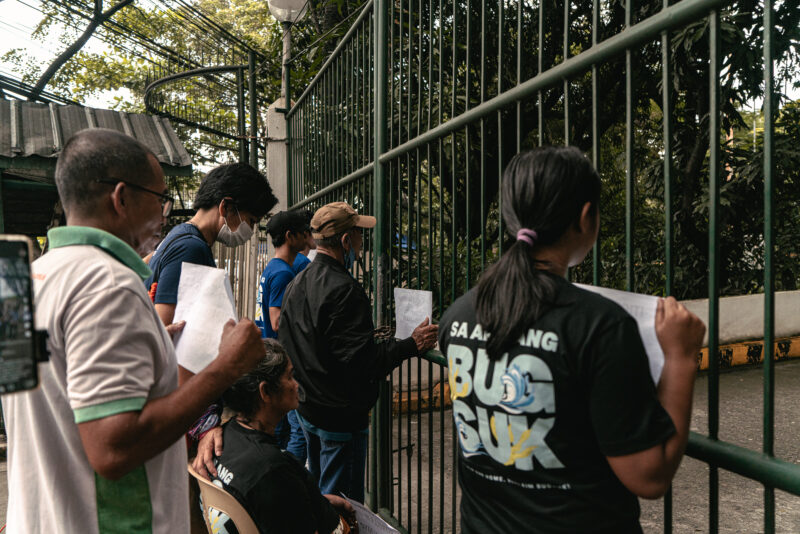Smooth custard cream filling enveloped in a flaky exterior, garnished with icing and granulated sugar—the cronut blends a number of complementing textures. Some are kept simple, oozing with cream and butter and drizzled with vanilla icing. Others are sprinkled with nuts, adorned with fruits, embedded in chocolate or smothered with jam and compotes.
This croissant-doughnut hybrid, more popularly known as the cronut, was created by New York chef Dominique Ansel and was originally intended for sale only in his bakery. “We change our menu very often,” Ansel shared in an interview with US-based food website, Eater. “[The cronut] was just an addition to the menu. I didn’t know it would take such a big part of the food world.”
But invade the food world it did. With its heart-stopping, deep-fried goodness, the cronut proved to be an immediate hit amongst New Yorkers. Eventually, people from across the globe started flying in to try Ansel’s pastries.
Nowadays, though it continues to attract people in droves, the cronut rests uneasily on its flaky throne: Many establishments have sought to duplicate its success by coming up with new and unorthodox food pairings.
The Philippines is not left out among the countries whose local businesses started fashioning their own versions of hybrid foods. The cronut is only one the novel combinations of much loved foods that have managed to take Filipino palates by storm.
East meets West
“I don’t like the word ‘hybrid.’ It’s very American, neither here nor there. Hybrid from whose perspective?” asks Fernando Zialcita, a professor of the Sociology and Anthropology Department. He much prefers the term “fusion food,” referring to the way foreign and local cuisines have merged together to become what our palates know and love today.
The notion of combining food from different cultures is nothing new in the Philippine food scene. Jollibee’s Aloha Burger, for example, was a hit that not only combined an American staple with a local tropical fruit, but also the salty-sweet taste that Filipinos can’t get enough of.
While unorthodox food combinations have been a part of the local food scene for quite some time, the cronut has stepped up the game. Up until a few months ago, no one in the Philippines would’ve considered merging a classic American doughnut with a sophisticated French croissant. Today, Ansel’s hyped up creation has Filipinos clamoring for more.
Wildflour Café + Bakery is largely responsible for initiating the local production of the cronut, which it offers in three flavors: Vanilla, chocolate and strawberry. Although its asking price is rather steep at 120 pesos a pastry, the demand for Wildflour’s version of the cronut is so ridiculously high that it never fails to sell its daily production of 300 pieces.
A few months after the cronut was introduced locally, another hybrid food from New York found its way onto Philippines shores: The ramen burger, a meat patty served with Japanese condiments in between two fried noodle “buns.”
This unconventional dish, which was brought to the country by Wrong Ramen and Umami Hambaagu House, was originally put together by Japanese-American chef Keizo Shimamoto. The burger debuted at Smorgasbord, an open-air food market in Brooklyn, New York, where 150 burgers sold out in 20 minutes.
Though the blend of two cultures is obvious, Shimamoto tells The Japan Times that he doesn’t see his creation as fusion food. “I consider (my) ramen burger to be Japanese-American. Just like me. It’s not fusion food. It’s a food born in America that happens to combine two different cultures and makes them exist as one.”
Homegrown
The notion of combining different foods is also a hallmark of Filipino cuisine. Everyday Filipino kitchens have birthed many outrageous food combinations: Just think of sour green mangoes paired with salty bagoong, sweet bananas and strips of jackfruit in crispy spring roll wrapper, or even salty bread toasted in condensed milk—the list goes on and on.
While many people view hybrid food such as the cronut and ramen burger as cultural imports, Filipino palates have actually been welcoming a contrast of flavors for a long time. Zialcita explains that many dishes introduced to the Philippine market are even modified in order to satiate the Filipino palate’s desire for sweet and sour foods.
It’s no surprise, then, that hybrid foods are piquing the interest of many adventurous Filipinos around the Metro. “People are lining up for foods like the cronut because it’s interesting. They want to try something new,” explains Windy Tuason-Tiongson, an assistant manager at Japanese burger steak restaurant Umami Hambaagu House.
“I’ve been in the industry for a long time, and I can see that Filipinos are very willing to try [the ramen burger] out, to try Japanese in a different world. Before, locals would only see Japanese food as sushi and tempura, but now they’re very open to ramen and burger steak,” she adds.
Boldness aside, Zialcita emphasizes that it’s natural for cultural patterns to get mixed in with local traditions. In fact, Japanese food never even had beef to begin with, as it was considered taboo in the country. It was only when they opened their country to world trade that beef was worked into Japanese menus.
A slice of the pie
It’s tough being the new kid on the block, and many of the original merchants of hybrid foods can attest to this. Despite their success, these trailblazers face not only the challenge of competition but also the problem of keeping up with demand.
This scarcity has simply helped further hype up hybrid foods. According Tuason-Tiongzon, the relative scarcity of the ramen burger “intrigues the people to buy something like [the ramen burger],” because they are under the impression that sold out stock necessarily means good food.
Social media has also played a significant role in hyping them up. Like with so many other contemporary trends, they also have sites like Twitter and Instagram to thank for their immense popularity.
“There is no better way to reach local customers but through social media [outlets] like Instagram and Facebook,” shares Tuason-Tiongzon. “I know for a fact that Umami and Wrong Ramen were able to have many customers due to social media.”
Aside from social media sites, these foods have made appearances on other popular websites as well. The original ramen burger was featured on Buzzfeed and Good Morning America. The cronut has even managed to find its way into the more dubious corners of Craigslist. “Seeking cronut slut” read the ad that offered original Dominique Ansel Bakery cronuts in exchange for sex.
Sexual favors aside, it’s this kind of media exposure and promotion that Zialcita says is lacking when it comes to local and indigenous food. As popular as fusion food was in the Philippines before the cronut and ramen burger came about, there’s little fanfare for the cultural mix in our local cuisine.
Next big thing
Hybrid foods are appealing because they provide a wonderful escape from the mundane. Although there is no replacing a classic cheeseburger or a sizzling hot plate of sisig, the ramen burger and the cronut provide a welcome change of pace.
But in spite of people’s current fascination with the cronut, the hype around it seems to be dying. “Ever since competitors came out [with their own versions of the cronut], it’s become a normal thing,” shares former JSEC stall owner, Erika Cantor.
Just as the crumbs begin to settle, the scramble for the next big food trend begins anew. But in the mean time, having another cronut or two wouldn’t hurt.











